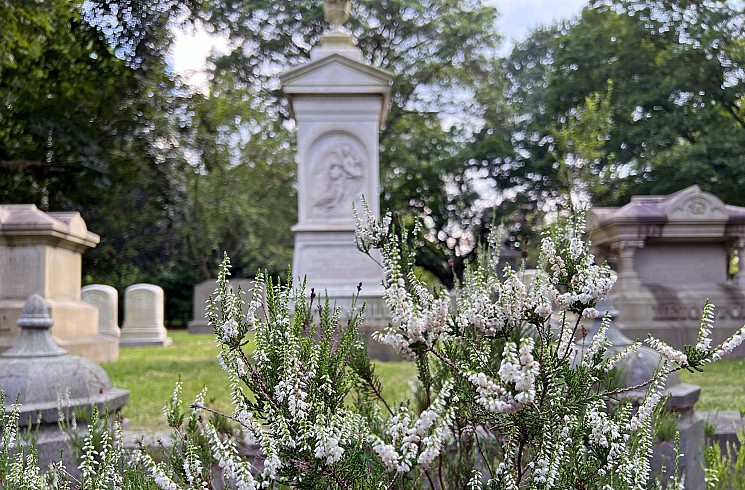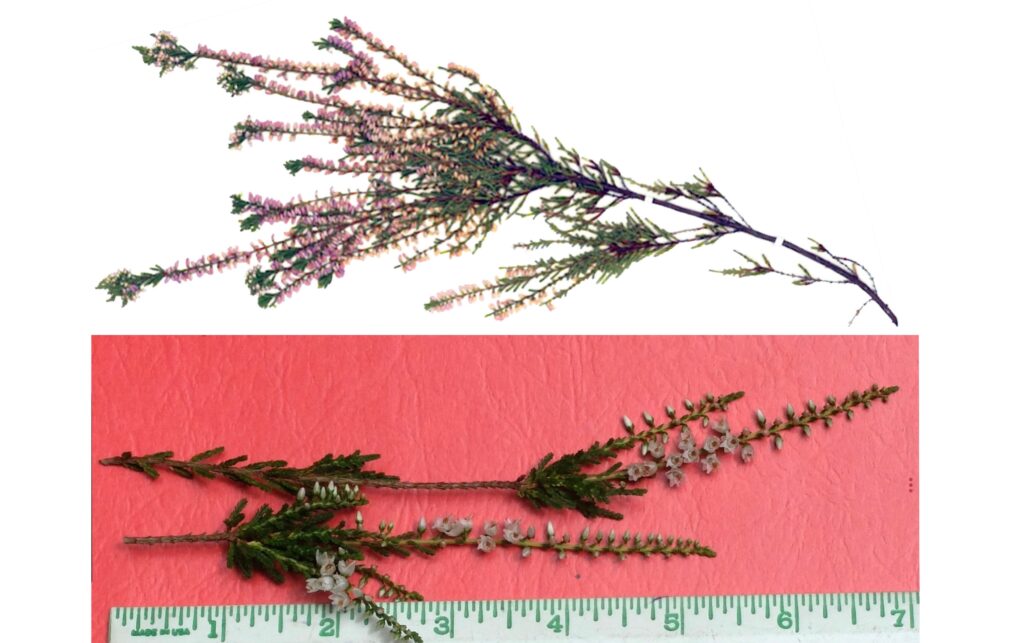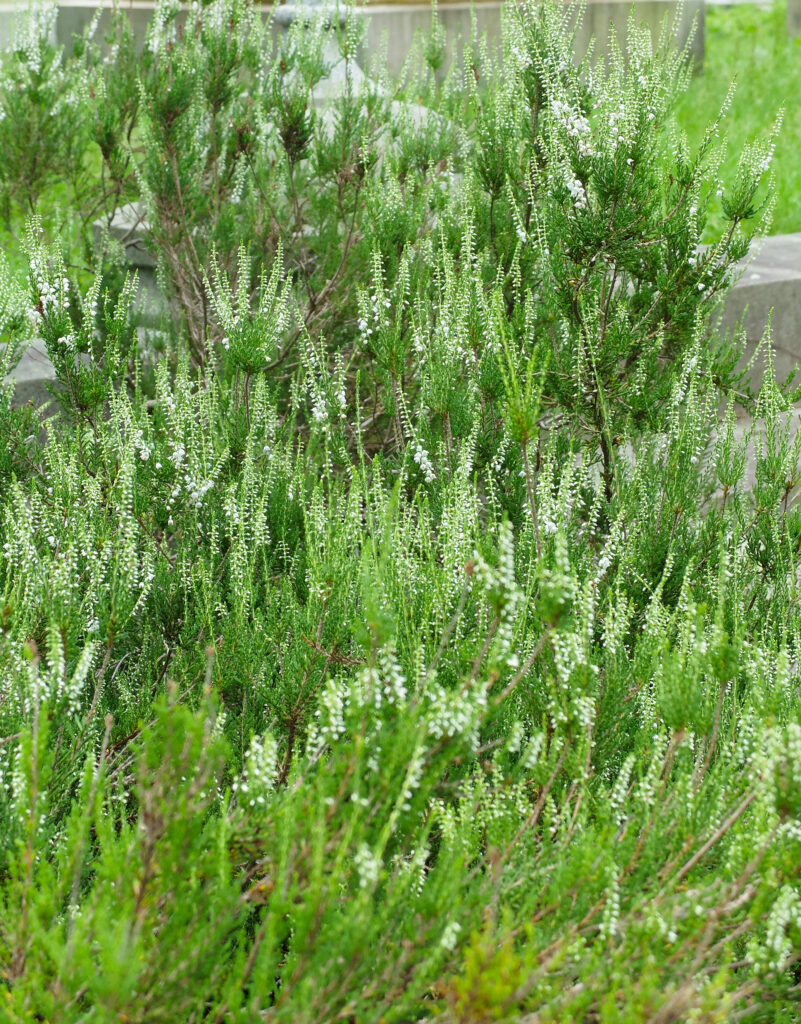Horticulture Highlight: Heather

Oh the summertime is coming
And the trees are sweetly blooming
And the wild mountain thyme
Grows around the blooming heather…
-Francis McPeake
Occasionally while viewing some plants, our minds may recall songs about that plant. A few examples include “Strawberry Fields Forever” by the Beatles, “Redbud Tree” by Mark Knopfler; “Willow Weep for Me” sung by Sarah Vaughan and scores of others. We began above with another song, “Will Ye Go Lassie Go” also recorded by numerous different artists. Herein we sing the praises of Heather, Calluna vulgaris, a native to western and northern Europe, south to Turkey.

This is a small, exquisite shrub reaching only one or two feet in height, often used as a ground cover. It’s 1/16”-long evergreen leaves are arranged along the stem in opposite pairs, with each pair at right angles to the pair above and below, creating en masse a squarish shape to the slender stems. From mid to late summer the ends of stems produce multiple ¼” -long flowers creating a one-sided spike up to 12”-long. Flower color naturally ranges rose pink to purplish pink and sometimes white. Heather flowers are favorites of bees. The Royal Horticulture Society lists over 800 cultivated varieties, hence increased color shades of flowers and leaves are available.
A discussion of etymology may create confusion. The genus name Calluna dates only from the late eighteenth century. Prior to that re-classification Calluna had been grouped together within Heath, a different shrub of the genus Erica. Heather, Calluna and Heath, Erica still get mixed up often. These two evergreen shrubs are within the ERICACEAE, the heath family. For further confusion, we consult Oxford American Dictionary, “Heath n. 1. An area of flat uncultivated land with low shrubs. 2. A small shrubby plant of the heather kind.”
However, there are distinct differences in foliage and time of bloom. Heather, Calluna leaves are scale-like on the stem, with flowers occurring from July to September. Heath, Erica leaves are distinctly needle-like occurring in whorls around the stem and flowers January/February to April, even with snow around the plant. Hopefully these actual differences help you identify these two kinds of shrubs.
In European history, Heather harvested from heathland served varied purposes. From early times it was ubiquitously used as a broom. The wiry branched stems also provided roof thatch. It was used to dye wool yellow and to tan leather. With the current interest in crafts brews, we cite the UNESCO World Heritage Site of Skara Brae, a Scottish stone age village, on the Orkney Islands, where archeologists identified 2000-year old pottery shards with traces of a fermented drink made with heather flowers, heather ale.
Heather Ale by Robert Louis Stevenson
From the bonny bells of heather
They brewed a drink long-syne,
Was sweeter far than honey,
Was stronger far than wine…
On a future visit to Mount Auburn look for our white flowering form (Scottish symbol of good luck) of Heather, Calluna vulgaris on Garden Avenue.
…So they two went together in glowing August weather,
The honey-breathing heather lay to their left and right…
-Christina Rossetti
Comments are closed.











